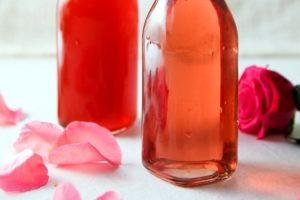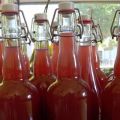Is it possible to store wine in plastic bottles, rules and features
When making homemade wine, the question often arises of where to store it later. Can homemade wine be stored in plastic bottles or is it better to use glass. How to store homemade wine properly so it stays good for as long as possible.
Can wine be made in plastic bottles?
When the preparation of homemade wine comes to an end, the question immediately arises of where to pour it later. The most commonly used plastic bottles. But it remains questionable whether it is suitable for this or is it better to pour it into glass. But it is better to do it in glass containers.
Pros and cons
Most often, ready-made homemade wine is poured into plastic bottles. Almost every home has empty containers of lemonade or water. Therefore, it is not necessary to spend money and buy additional containers. But this storage method has advantages and disadvantages.
Benefits of using a plastic container:
- low price;
- different volumes;
- weight (it is convenient to sell in such containers);
- spaciousness;
- ease of use;
- easy to clean;
- fermentable in plastic bottles;
- there is a possibility to reuse.
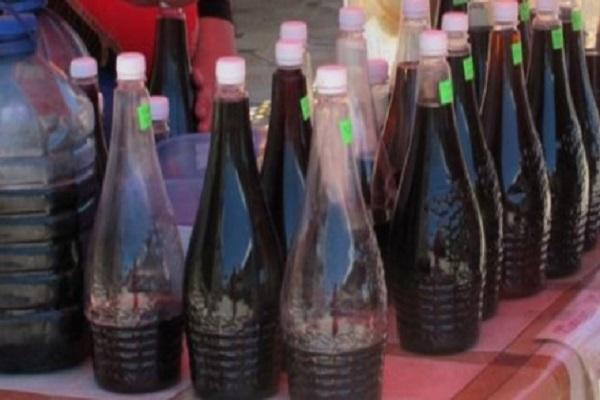
But there are many disadvantages to using such containers for bottling alcohol. If you put plastic in a warm place, harmful substances, including microplastics, begin to be released. This also happens if you put it on fermentation. Despite the fact that plastic bottles are easy to use and cheap, it is dangerous to store the drink in such a container. Especially if the containers will be exposed to high temperatures.
But if you follow the storage rules, then you can pour homemade wine into plastic without fear that it will have a harmful effect on your health.
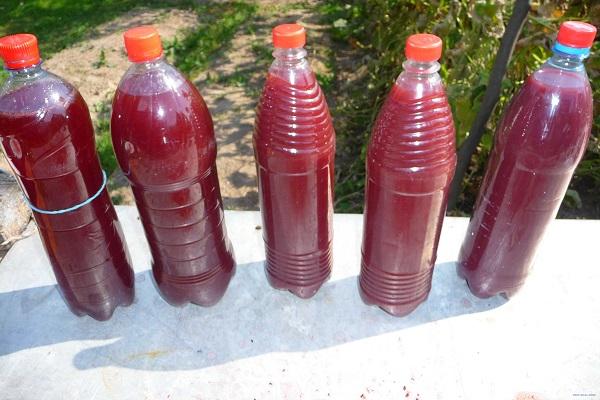
Which plastic is suitable
Not all types of plastic are used to store homemade wine. Containers made of water or other drinks are suitable. But in this case, it is still necessary to choose containers. Very often, due to storage in plastic bottles, alcohol acquires an unpleasant aftertaste of plastic and begins to smell bad.
Another big problem when using plastic is that it is able to pass air and other gases. As a result, oxidation processes take place.
To understand whether a container is suitable for spillage or not, you need to find the PETE or HDPE icon. If the container has these markings, then it is suitable for bottling.
All other types of plastic with different markings cannot be reused for bottling any beverages, not just wine.

Storage rules in plastic containers
In order for homemade wine not to spoil as long as possible, it must be bottled correctly and kept under optimal storage conditions.
Rules for storing a drink in plastic:
- You can only use those bottles in which drinks or other food products were previously stored. Do not use other bottles.
- It is also important to check the labeling before dispensing the drink. The label must be PET (PETE) or HDPE.
- Before pouring the drink, the container will have to be thoroughly washed with soap and dried. There should be no smell coming from it.
- After the bottle has been washed, it should be disinfected. An iodine solution is suitable for this. Dissolve 3-5 drops of iodine in water and rinse the container with a solution. Then rinse with clean water.
- It is also advisable to soak the lids in iodine solution for 35-50 minutes.
- Wine in plastic is recommended to be checked regularly. If an unpleasant smell or taste appears, you must immediately pour it into a clean container.
- The drink should be stored upright in a cool place.
After the bottles are ready, pour the wine and seal them with lids.
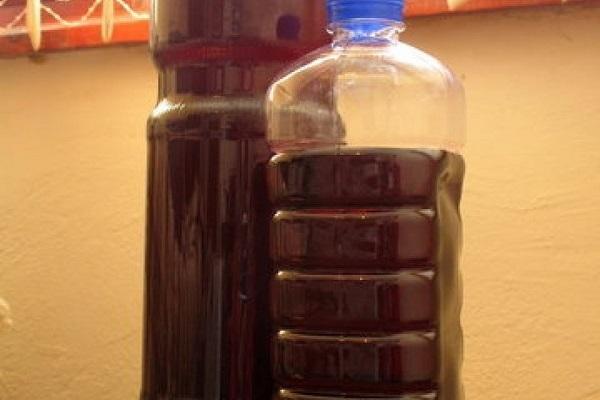
Everything you need to know about wine expiration dates
The shelf life of wine largely depends on the conditions in which the drink is stored. If it is stored in plastic, keep in mind that the shelf life is about 3 months. You need to put containers in a cool place where sunlight does not penetrate. The optimum temperature is +5 - +15 degrees.
If you keep the drink in plastic longer, then even under favorable storage conditions, oxidation processes will begin to occur over time. This spoils the taste of the drink. Not to mention the fact that microplastics, which are dangerous to human health, begin to stand out from the plastic.
The maximum shelf life can be if it is stored in glass jars or bottles. For example, you can roll up cans of wine like a canning roll.

Storage time of wine in plastic
The shelf life in plastic is short. Even if all storage conditions are met, the shelf life is still 3-5 months, no more. Of course, you can keep it longer, but the taste of the drink could be much better. Alcohol takes on an unpleasant aftertaste and smells bad.
It is best to use glass. You don't have to buy special bottles. Ordinary banks are quite suitable for this purpose.
Some winemakers recommend pouring purchased wine in plastic bottles (for example, homemade wine is found on almost every corner among local residents in the south) into glass containers. It is best to roll them up with lids after that. But any other sealed packaging will do.

How much can be stored after opening the container
The shelf life after opening the container of any wine is several months. After opening, it is recommended to store it for no more than two months. But this rule is often neglected. This is especially true for homemade wine. Plastic is not the best material for storing alcoholic beverages. Use it in extreme cases. It is recommended to store purchased wine in plastic bottles after opening for no more than six months.
After opening, it is recommended to pay even more attention to storage conditions. Under no circumstances should you leave alcohol in the sun or in a room with a high air temperature. Store opened alcohol only in the refrigerator. If these conditions are not followed, the drink will deteriorate the next day after the bottles have been opened.

